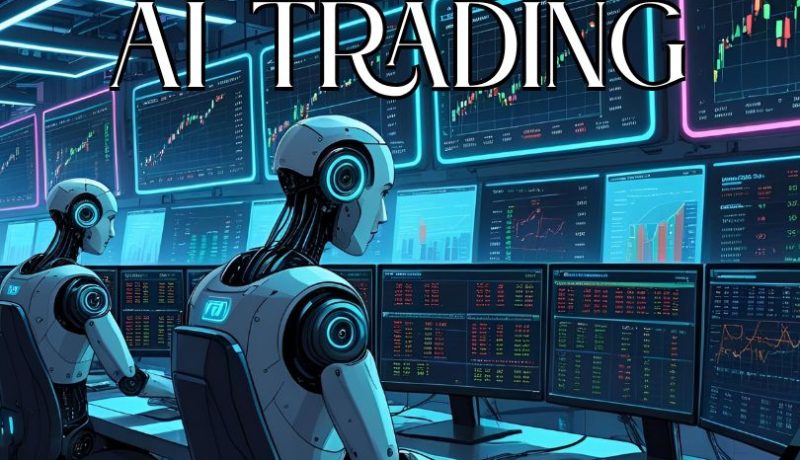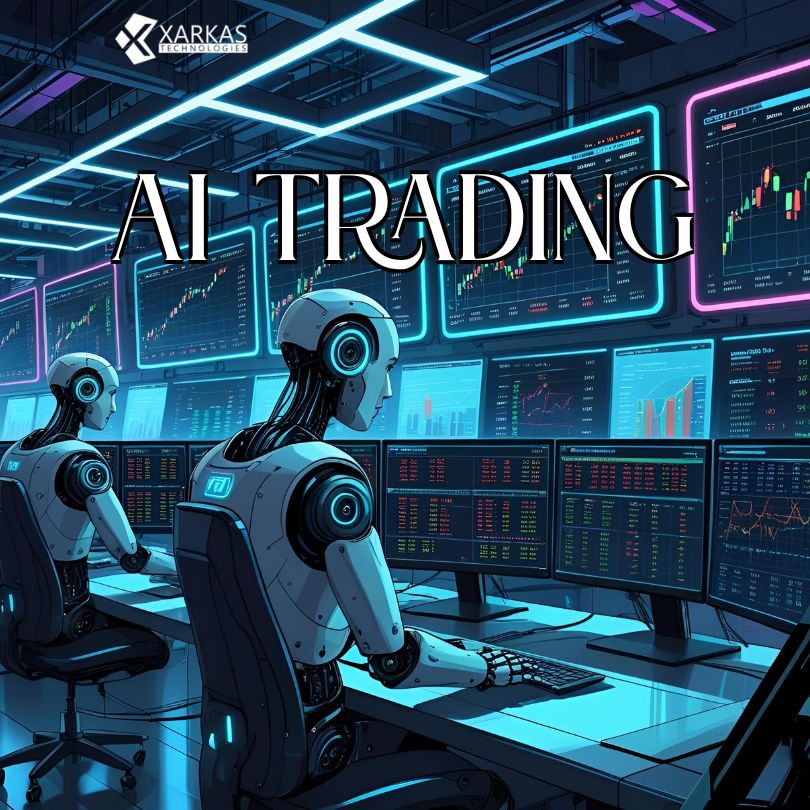
AI Trading: The Future of Intelligent Financial Markets
In the age of digital transformation, AI trading is redefining the global financial ecosystem. As artificial intelligence continues to evolve, its impact on the trading industry is becoming more profound, driving automation, predictive analytics, and algorithmic decision-making to levels never seen before. This comprehensive guide explores the nuances of AI trading, from how it works to its benefits, challenges, and the future it holds.
Table Of Content
- What is AI Trading?
- How AI Trading Works
- Benefits of AI Trading
- 1. Speed and Efficiency
- 2. Emotion-Free Decisions
- 3. Enhanced Accuracy and Prediction
- 4. Cost Reduction
- Applications of AI in Trading
- High-Frequency Trading (HFT)
- Portfolio Management
- Risk Management
- Sentiment Analysis
- Popular AI Trading Platforms
- 1. MetaTrader 5 (MT5) with AI Plugins
- 2. QuantConnect
- 3. Alpaca Markets
- 4. Trade Ideas
- Challenges of AI Trading
- 1. Overfitting and Model Bias
- 2. Regulatory Compliance
- 3. Data Quality and Volume
- 4. Market Anomalies
- Best Practices for Implementing AI Trading
- The Future of AI in Trading
- Conclusion
What is AI Trading?

AI trading, also known as algorithmic trading or automated trading, refers to the use of machine learning, deep learning, and natural language processing to make informed trading decisions without human intervention. These systems analyze vast amounts of data at lightning speed and execute trades based on learned patterns, historical trends, and predictive modeling.
By mimicking human reasoning but with exponentially greater efficiency, AI trading bots can assess real-time market conditions, identify opportunities, and execute orders in milliseconds, ensuring maximum precision and profitability.
How AI Trading Works
At the core of AI trading is the integration of data science and financial algorithms. Here’s how the process typically unfolds:
-
Data Collection: Massive volumes of market data, including stock prices, news articles, economic indicators, and social sentiment, are gathered.
-
Preprocessing and Feature Engineering: The data is cleaned and transformed into features that algorithms can analyze.
-
Model Training: Machine learning models are trained using historical data to predict future market movements.
-
Backtesting: Before deployment, the model is tested against historical data to evaluate performance.
-
Execution: Once validated, the model is integrated into a trading system that automatically places buy or sell orders.
Popular frameworks for AI trading include TensorFlow, PyTorch, and scikit-learn, often paired with platforms like MetaTrader, QuantConnect, and Interactive Brokers.
Benefits of AI Trading
1. Speed and Efficiency
AI trading systems operate at superhuman speeds. They process vast datasets, detect opportunities, and execute trades within milliseconds—something no human trader can match.
2. Emotion-Free Decisions
Unlike human traders, AI is not driven by fear, greed, or impulse. This ensures that trades are made based solely on logic and data, improving consistency and reducing risk.
3. Enhanced Accuracy and Prediction
AI models can analyze complex patterns and variables that traditional models overlook, leading to more accurate forecasting and better trade timing.
4. Cost Reduction
Automated trading reduces the need for large trading teams and minimizes the cost of human errors, improving overall operational efficiency.
Applications of AI in Trading
High-Frequency Trading (HFT)
AI is the backbone of high-frequency trading, where trades are executed at extremely fast rates, capitalizing on small price changes. AI ensures that decision-making is optimized in microseconds, giving firms a competitive edge.
Portfolio Management
AI tools assist in portfolio optimization, identifying asset allocations that balance risk and return based on investor goals and market dynamics.
Risk Management
AI can monitor portfolios in real-time and flag abnormal behavior or volatility, enabling proactive risk mitigation.
Sentiment Analysis
Natural language processing allows AI to analyze financial news, social media, and economic reports to gauge market sentiment—an essential tool for traders anticipating large market shifts.
Popular AI Trading Platforms
1. MetaTrader 5 (MT5) with AI Plugins
An industry leader that supports algorithmic trading via Expert Advisors (EAs) and allows integration of custom AI models.
2. QuantConnect
Built on C#, this open-source platform supports advanced AI models and provides historical data for backtesting strategies.
3. Alpaca Markets
A commission-free trading API that developers use to build and deploy AI-powered trading bots on live market data.
4. Trade Ideas
This platform uses proprietary AI called Holly to make autonomous trading decisions. It’s a favorite among professional day traders.
Challenges of AI Trading
1. Overfitting and Model Bias
AI models trained on historical data might perform poorly in live markets due to overfitting or unseen variables.
2. Regulatory Compliance
AI systems must comply with SEC, FINRA, and MiFID II regulations. Ensuring transparency and accountability in AI decision-making is crucial.
3. Data Quality and Volume
AI is only as good as the data it consumes. Poor-quality data can lead to misleading predictions and financial losses.
4. Market Anomalies
Even the most advanced models may struggle with black swan events, where unpredictable factors disrupt patterns.
Best Practices for Implementing AI Trading
-
Diversify Data Sources: Use structured and unstructured data for robust model training.
-
Continuous Learning: Implement models that adapt over time using reinforcement learning or online learning techniques.
-
Backtest Thoroughly: Simulate trading strategies on historical data before deploying live.
-
Implement Safeguards: Always have human oversight and fail-safes in place to prevent catastrophic losses.
The Future of AI in Trading
The future is promising for AI trading. With advancements in quantum computing, edge AI, and explainable AI (XAI), we can expect even more sophisticated models that are faster, more transparent, and more intelligent.
Additionally, decentralized finance (DeFi) is opening new frontiers for AI, allowing autonomous bots to interact with smart contracts and participate in yield farming, liquidity provision, and decentralized exchanges.
Conclusion
AI trading is not just a trend; it’s a paradigm shift in how we approach the financial markets. From speed and accuracy to emotionless decision-making, AI is creating unprecedented opportunities for traders and investors alike. However, success with AI trading depends on solid models, clean data, and rigorous testing. As AI continues to evolve, those who embrace its potential will dominate the future of finance.







No Comment! Be the first one.